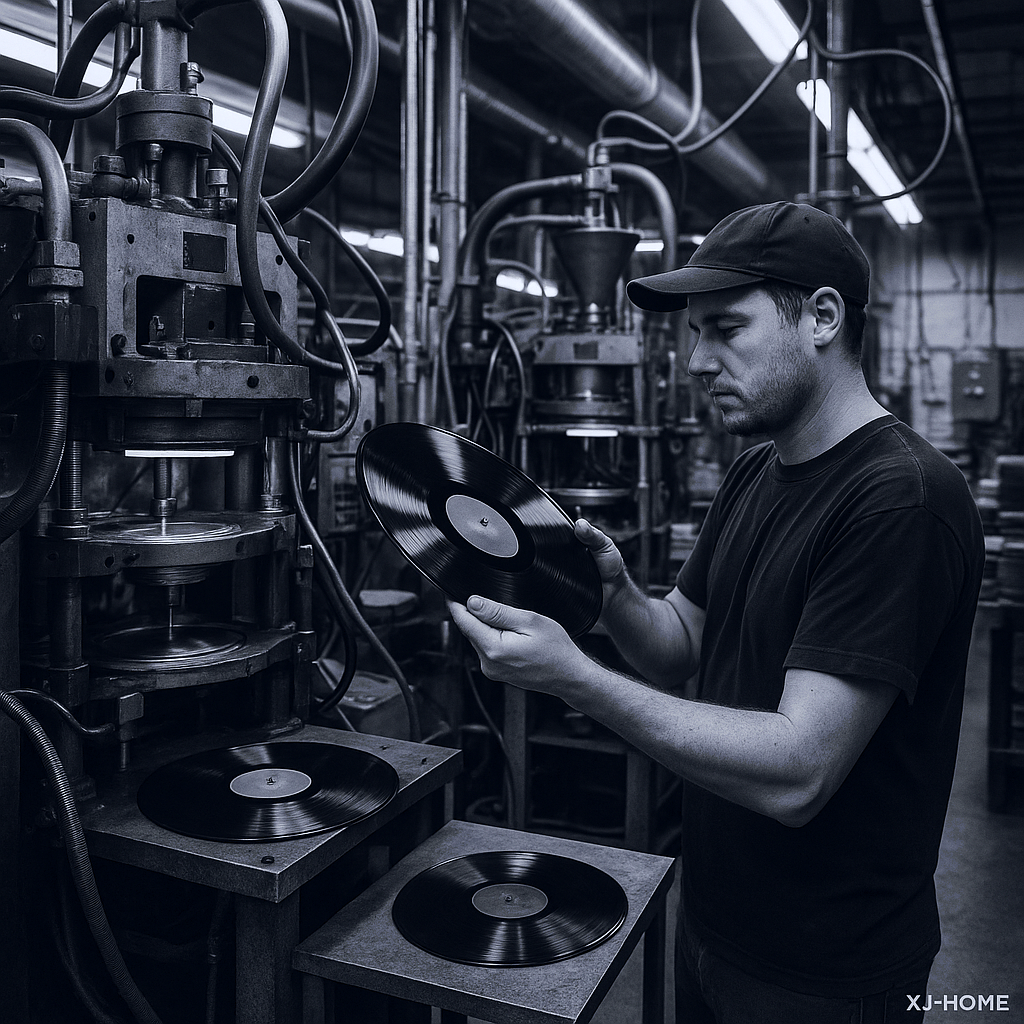Vinyl records are more than just a medium for music; they are tactile artifacts, miniature time capsules, and for many, cherished collectibles. Their grooves hold not just sound, but memories and artistry. But these delicate discs demand respect. Unlike a fleeting digital stream, a physical record is susceptible to the oils on our fingers, the dust in the air, and the clumsiness of a moment. Learning how to properly handle your vinyl is not just good practice – it's a fundamental part of preserving their sonic integrity and their value for years, even decades, to come.
Think of it as a ritual, a mindful interaction that enhances the entire listening experience. Sloppy handling is the quickest way to introduce pops, clicks, surface noise, and even permanent damage. So, let's lay down the collector's creed for keeping your vinyl pristine.
The Golden Rules of Vinyl Handling
-
Clean Hands are Happy Records:
This might seem obvious, but it's the absolute foundation. Before you even think about touching a record, wash and thoroughly dry your hands. Oils, dirt, and grime from your fingers are vinyl's arch-nemesis. These contaminants transfer to the record surface, get ground into the grooves by the stylus, and are incredibly difficult to remove completely.
-
Handle by the Edges and Label Only:
This is the cardinal rule. Never touch the playing surface (the grooved area) of a record.
-
How to Pick Up a Record: Gently slide the record partially out of its inner sleeve. Place your fingertips on the outer edge of the record and your thumb (or another finger) on the center label. Lift it out smoothly.
-
Holding a Record: Maintain this edge-and-label grip. You can support the record with two hands, one on each opposite edge, or with one hand using the edge/label technique if you're comfortable.
-
Why it Matters: The grooves are incredibly fine – microscopic, in fact. Fingerprints leave oily residues that attract dust, which then acts like an abrasive under the stylus. This leads to noise and wear.
-
-
The Art of Removing from the Sleeve:
-
Outer Sleeve (Poly Bag): If your record has a protective outer plastic sleeve (and it should!), remove the entire jacket from this first.
-
Inner Sleeve: Reach into the record jacket and gently pinch the inner sleeve (the paper or plastic sleeve directly holding the record) along with the record itself. Slide them out together. Avoid just yanking the record out by its edge, as this can cause scuffs or ring wear on the jacket.
-
Extracting the Disc: With the inner sleeve opening facing upwards, allow the record to slide out gently into your prepared hand (using the edge/label grip). Don't let it just drop out. Some prefer to place the jacket on a flat surface and carefully slide the inner sleeve out.
-
-
Placing the Record on the Turntable:
-
Continue to hold the record by its edges and label.
-
Carefully align the center hole of the record with the turntable spindle.
-
Gently lower the record onto the platter. Avoid dropping it or letting it slide across the platter surface, especially if you have a felt slipmat that could potentially scuff it.
-
-
Returning the Record to its Sleeve:
This is just as important as taking it out.
-
Open the Inner Sleeve: Gently open the mouth of the inner sleeve with your free hand.
-
Slide it In: Holding the record by its edges/label, carefully slide it back into the inner sleeve. Ensure it goes all the way in without forcing or bending.
-
Inner Sleeve Orientation: A common practice is to orient the opening of the inner sleeve so it's facing upwards (or to the side) when the record jacket opening is to the side. This helps prevent the record from accidentally sliding out of the inner sleeve and then out of the jacket.
-
Jacket Re-entry: Slide the inner sleeve (with the record) back into the record jacket. Then, return the entire package to its protective outer sleeve.
-
Beyond Basic Handling: Extra Care Tips
-
Avoid "Record Stacking": Never stack unprotected records directly on top of each other. This is a surefire way to cause scratches and scuffs. Even on a turntable, only play one record at a time (unless you have an old-school record changer, which has its own set of considerations for record wear).
-
Keep it Vertical: Always store your records vertically, like books on a shelf. Stacking them horizontally for extended periods can lead to warping due to the uneven pressure. Proper storage is a topic worthy of its own discussion, but vertical is the way. At XJ-HOME, we believe that caring for the physical media is as important as the equipment that plays it.
-
Dust is the Enemy: Keep your listening environment as dust-free as possible. Use a dust cover on your turntable when it's not in use.
-
Pre-Play Cleaning: Before each play, use a good quality carbon fiber anti-static record brush to remove any loose surface dust. Hold the brush gently on the spinning record for a couple of rotations, then slowly sweep the dust towards the edge and off the record. For more on cleaning, you might find resources like the Library of Congress's guide on caring for sound recordings insightful, though it covers more archival concerns.
-
Beware of Liquids and Heat: Keep records far away from drinks, food, direct sunlight, radiators, or any sources of extreme heat or moisture. Warped records are often unplayable.
It Becomes Second Nature
While this might seem like a lot of rules, proper vinyl handling quickly becomes an ingrained habit. It’s a small investment of care that pays huge dividends in the longevity and sound quality of your collection. By treating your records with this level of respect, you ensure that the magic captured in their grooves can be enjoyed for many years to come. Happy listening, and handle with care!





Leave a comment
All comments are moderated before being published.
This site is protected by hCaptcha and the hCaptcha Privacy Policy and Terms of Service apply.